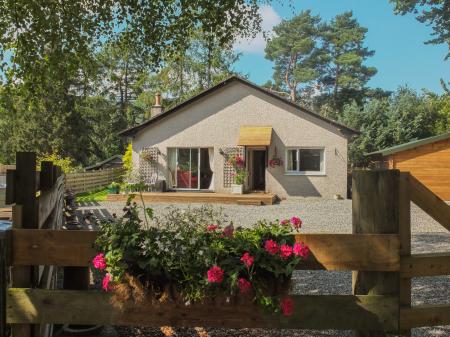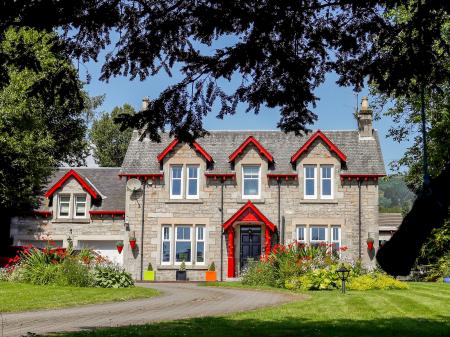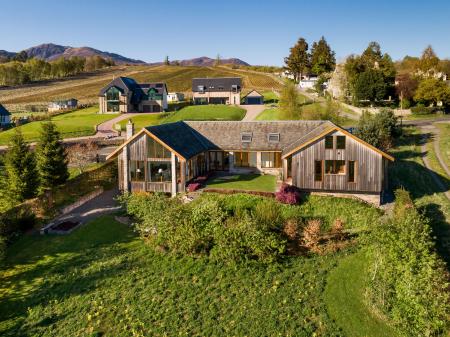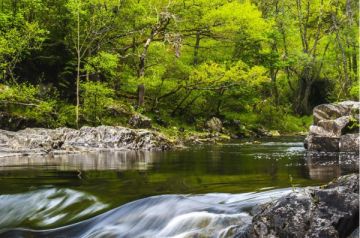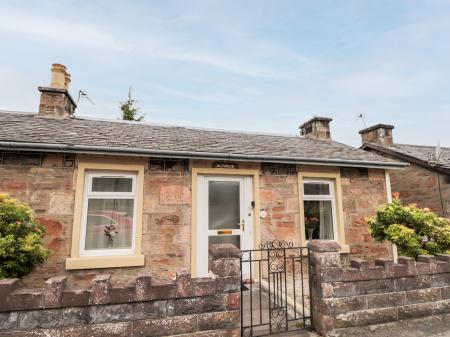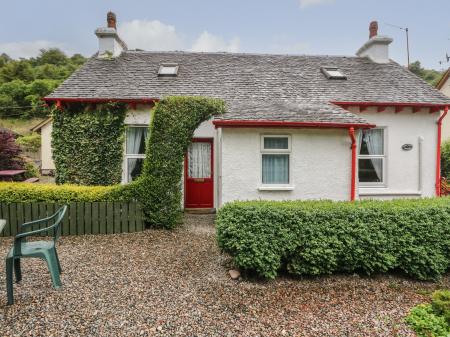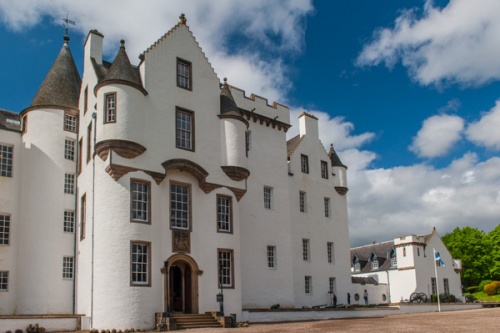
The castle is sited to control access through Strath Garry, on the main route between Inverness and the Cairngorms.
History
Blair Castle dates at least to the mid-13th century, and the earliest part of the current castle, Cummings Tower, was built in 1269 by the Comyns of Badenoch.
The land chosen by the Comyns, however, was owned by the Earls of Atholl, who didn't take kindly to the incursion. The Atholls evicted the Comyns and have lived at Blair Castle ever since, though in the 15th century the Earldom was awarded to the Stewarts of Balvenie as a reward for fighting against the Douglasses and Macdonalds.
In 1652 Roundheads under Cromwell captured the castle and held it until the monarchy was restored in 1660. Like many Scottish families, the Stewarts were torn apart by the Jacobite Rebellions.

In 1715 the Duke supported the government cause, but his son and heir followed Bonnie Prince Charlie into exile. He returned 30 years later as one of the Seven Men of Moidart who helped launch the Prince's doomed attempt to capture the crown.
During the Rebellion Blair Castle was held by troops loyal to George I. In March 1746 the castle was besieged by Jacobite troops marching to Culloden. This short episode was the last siege on British soil.
As for the house, the 3rd Earl had added an extension to the medieval fortress in 1530, with a great hall over vaulted storage chambers. In 1740 the medieval building was transformed by the 2nd Duke into a comfortable mansion, tearing down turrets and creating a fashionable Georgian residence.
The castle was transformed once more in the 1860s when the 7th Duke had the Georgian building renovated in the popular Scottish Baronial style. The 19th-century rebuilding restored turrets and castellations, returning the castle to a style approaching its medieval origins.

One of the features added at this time was an elegant ballroom designed by Edinburgh architect David Bryce and still used for functions today.
Blair Castle was used as a hospital during WWI, and eventually the family moved from the state bedchambers to more convenient private quarters elsewhere in the castle.
Highlights
Interior highlights include the 19th century entrance hall, with a display of weapons. Artistically arranged weapon displays were a popular expression of Scottish Baronial style, and Blair Castle makes the most of the family's military history with shields and muskets used at the Battle of Culloden in 1746.
Other highlights include the Georgian staircase, hung with family portraits, and the Derby Suite, named for Lady Amelia Stanley, daughter of the 7th Earl of Derby, who married the 1st Marquis of Atholl in 1659. Lady Amelia's mother embroidered the elegant bed hangings in 1650.
Queen Victoria stayed in the Derby Suite when she visited Blair Castle in 1844. The queen was guarded during her stay by 100 specially selected Atholl Highlanders. She must have been pleased at the service they rendered, for she granted them regimental colours, including the right to bear arms.

Perhaps more spectacular is the Tapestry Room, hung with Mortlake Tapestries once owned by Charles I. The tapestries were sold by Cromwell following the king's execution, and found their way eventually to Paris, where they were discovered by the 1st Duke and brought back to Blair Castle.
The house is filled with fabulous period furniture and fine art, with collections of arms and armour, lace, Jacobite relics, Masonic items, and fine porcelain seeming to fill every room.
The Gardens
The historic castle stands in a superb landscape of gardens and woodland. Most of the grounds surrounding the castle were laid out in the 18th century, when landscape gardens were all the rage.
The heart of the castle grounds is the 9-acre Hercules Garden, named for the statue of Hercules which overlooks the garden wall. Within the walled area are landscaped pools, an Oriental bridge, and an orchard of over 100 trees.

At the farthest end of the garden is a neo-classical folly, with statues looking down the length of the pools. On the north wall is a herbaceous border running 275 feet, adding lush colour in the summer months.
In woodlands near the castle is Diana's Grove, surrounded by gigantic trees that are among the oldest and tallest in Britain. A short walk from the grove is the roofless ruin of St Bride's Kirk. There has been a church here since at least the 10th century, but the current building is medieval.
St Bride's is the final resting place of John Graham of Claverhouse, Viscount Dundee (Bonnie Dundee, or Bloody Claverhouse depending on your political inclinations). Dundee met his end at the Battle of Killiecrankie in 1689 and was brought to Blair Castle for burial.

Blair Castle is a delight; the very epitome of a Highland mansion, with a rich history that is never far from the surface. The gardens are superb, and together with the castle make for a 'must see' stop.






 We've 'tagged' this attraction information to help you find related historic attractions and learn more about major time periods mentioned.
We've 'tagged' this attraction information to help you find related historic attractions and learn more about major time periods mentioned.